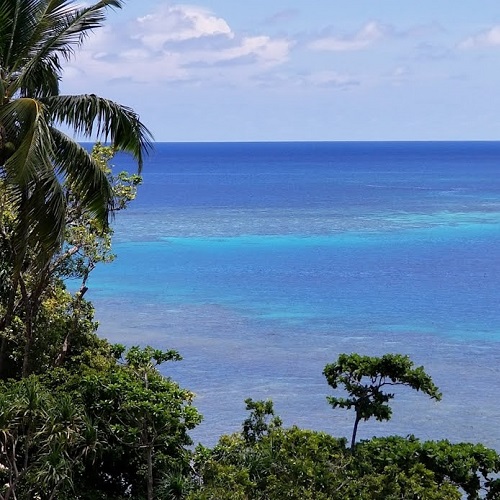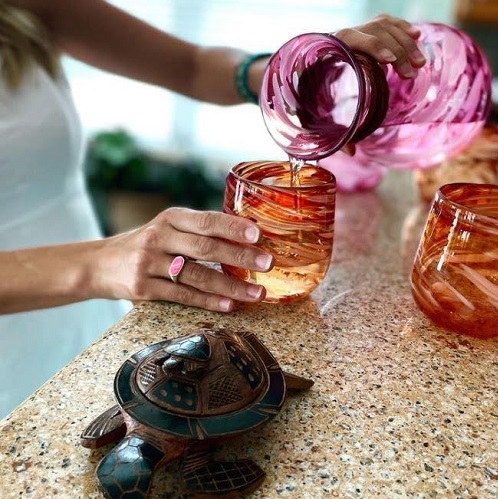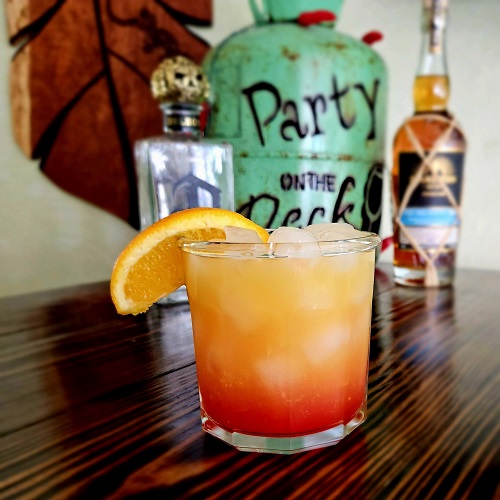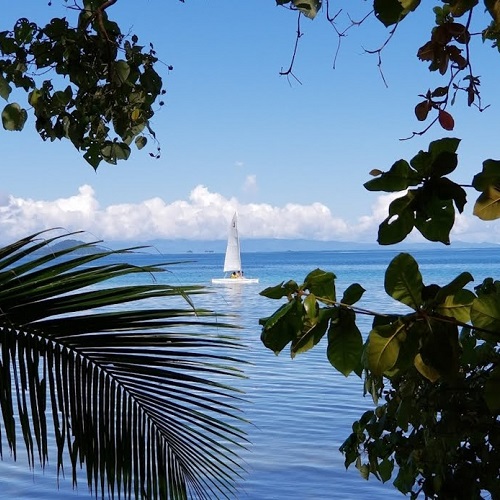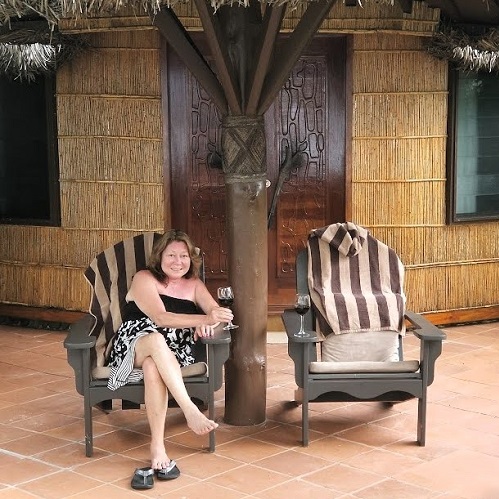
10 Tropical Wedding Table Décor Ideas Guaranteed To Wow Your Guests

Tropical Rugs: The Ultimate Guide with Styling Ideas (Including Mistakes to Avoid)
Guide To Tropical Style Furniture: Designing Your Own Beach Paradise at Home
Learn How to Use Furnishings To Create Relaxing The Ambiance of an Island Resort in Your Living Space
In interior design,
In the guide below, we will talk about the history, the main characteristics, the materials, shapes, and various types of furniture available. We also have information about why sustainability and eco-conscious shopping matters. Most importantly, you will learn how easy it is to breathe in the fresh ocean breeze with the right elements.
Note: This post contains affiliate links. A click and/or purchase through one of these links may result in a commission paid to us at absolutely no cost to you. Please be sure to read our Affiliate & Advertising Disclosure.
The Origins of Tropical Style in Furniture Making
Tropical styling in furniture originates from the age of exploration when explorers first encountered the Indigenous cultures of the South Pacific, the Caribbean, Asia, and Africa. These cultures have historically used local resources such as bamboo, rattan, ebony, mahogany, and teak for making distinctive, durable furnishings that are fit for hot and humid
As the Old World met the New World, new design trends were introduced and traditional

Exotic armchair made of Palmwood from Fiji. Photo Credit: Pacific Green
What Is Tropical Style Furniture?
Simply put,
Furnishings are typically heavy and are made of dark
Of course, as with any other style, there are variations in design, ranging from traditional to modern, and from coastal to luxury.
- Traditional (classic) – Large, statement pieces made of dark wood, often with ornate carvings and more classic upholstery patterns.
- Modern – Sleek lines in more contemporary styles without busy decorative details which are perfect for more minimalist looks.
- Coastal – Lighter, subdued colors, beachy vibes, distressed wood finishes, often with driftwood and seashell accents.
- Luxury – Opulent accents and details, high-quality materials, rich finishes and a heavier use of textures.

Classic
Key Features
Tropical furniture pieces draw inspiration from fine, white sand, clear, vibrant blue seas, and deep emerald green forests. If you want to furnish your home with items that reflect this breezy and relaxed atmosphere, look for pieces with the following characteristics:
- Materials: Made from woods found in
tropical regions such as rattan and teakwood - Design: Curved lines, natural finishes, both heavy and lightweight construction, often with ornate carvings
- Color palette: Bold colors including coral, mango, turquoise, oranges, often combined with neutrals (creams, browns, and beiges)
- Motifs: Oversized florals, palm leaves, banana leaves,
tropical animals - Textiles: Loosely woven, lightweight textiles such as linen, cotton, and silk
- Accessories: Carved wooden ottomans, woven rugs, island-style artwork, coral accent lamps, folding screens with carved woodwork on the partitions

Vivid colors paired with dark brown furniture in the dining room. Photo Credit: Applegate Tran Interiors
Materials
Tropical furnishings are usually made from materials that are found in
- Teakwood – Teakwood (Tectona grandis) is
tropical hardwood species prized for its weather resistance and durability. It is one of the most popular woods because it is ages beautifully. The natural oils in teakwood make it remarkably resistant to moisture, pests, and decay. These oils prevent damage, warping, cracking, and rotting. Because of its dense grain, it is very durable and strong with minimal chance of bending or breaking. In fact, teakwood is harder than mahogany, pine, and chestnut wood. It comes in a range of colors from yellowish to brown and because of its properties and low maintenance, it is often more expensive. Due to its weather resistance features, it is often used for making furniture for outdoor living rooms and patios and for kitchen accessories like cutting boards and even countertops. - Bamboo – Bamboo is technically a grass and is not a wood. It is often used in furniture making because of its excellent characteristics. It is lightweight yet very sturdy, very durable, and very versatile. Although it is naturally resistant to humidity and insects, it may require periodic moisturizing to minimize the chance of cracking as it can dry out. This competitively-priced material is used to make a whole range of items such as bedframes, tables, chairs, chests, console tables, mirror and picture frames, outdoor decking, interior flooring, and many more. It is easy to maintain and lasts for decades, making it one of the most popular materials for home use today.
- Rattan – Rattan is plant-based material, made of stems of a climbing vine-like palm, native to the tropics. It is lightweight, airy, and can easily be bent, but at the same time it is very strong and durable. It has been said that rattan is even stronger than bamboo. It is highly resistant to wear and tear, most weather conditions, and insects. Rattan is very popular and is used to make a variety of furnishings like chairs, sofas, woven baskets, boxes, headboards, etc. Rattan should be reserved for indoor use in humid locations though because it will begin to mold and rot in high humidity and wet conditions when left outdoors.

Rattan chair. Photo Credit: The Spruce
- Mahogany – Mahogany is a richly colored, exotic timber made of hardwood belonging to the Swietenia species. Because it’s incredible durability and the fact that it takes on furniture polishes and oils really well, it is a great choice for furniture. Characterized by its deep reddish-brown hue and straight, lustrous grain, it is often used for making elegant luxury pieces which many times feature intricate design patterns. Unless you live in a
tropical area where mahogany wood is grown locally and products are made locally, it typically is very expensive. It also darkens over time as so several other types of wood. But mahogany is known to sometimes darken considerably. That can present an issue over time if specific long term color coordination is required with other room décor. Common household furnishings made of mahogany include dressers, cabinetry, dining tables, wardrobes, chests, sofas, and mantels. - Wicker – Many people are not aware that wicker is technically not a material. The term ‘wicker’ denotes a weaving technique that uses seagrass, rattan, bamboo, or other thin strips of material to craft different products such as baskets, wicker chests, chairs, and side tables. When natural wicker is not the best idea for outdoor use because of local weather conditions, there is synthetic wicker which is also referred to as ‘resin wicker’. The materials used resemble natural rattan and cane and are mostly used to weave lightweight items for both outdoor and indoor use, such as patio chairs, accent tables, and lounge sets. Synthetic wicker is not susceptible to damage caused by extreme temperatures, strong sunlight, and moisture, meaning it will not warp or crack when exposed to harsh weather conditions. Other the coloring possibly experiencing a bit of fading over time, this type of wicker is excellent for outdoor use.
- Seagrass & Water Hyacinth – Because these are very flexible, seagrass and water hyacinth are wonderful materials which are commonly used for weaving pieces like chairs, ottomans, stools, and end tables. They add awesome texture and warmth to any space. However, they are not resistant to moisture, so they should be used only indoors. Due to their natural occurrence and renewable nature, both seagrass and water Hyacinth are considered to be eco-friendly.

Handwoven seagrass coffee table. Photo Credit: English Elm
How To Use Tropical Furniture In Your Space
Tropical décor is more than just furniture, fabrics, and the layout. It’s about blending the outdoors with the indoors, connecting with nature, and living with a carefree and positive state of mind. There are lots of ways to add exotic island ambiance to your living space and here, we will share some simple and easy ones.
Sofas, Couches, & Sectionals
Tropical sofa frames are often made of rattan or bamboo with woven panels on the side, designed to provide an airy and open feel. The upholstery fabrics are usually made from linen and cotton which help to create that organic and
Example: Wood or rattan sofas and chair seating sets with exposed framing and off-white cushions are often seen in the living rooms of beach resorts. The openness of the frames contribute to the openness of the space and the natural flow which is especially important if you live in a warm climate. You can further beautify the room by adding pops of

Lounge area. Photo Credit: 1hotels.com
Armchairs & Accent Chairs
Armchairs and accent chairs add a lot of exotic flair to
Example: A bamboo chair with large, tufted cushion with rounded frame is ideal for reading nooks, office spaces, and living rooms.

Handcrafted torched bamboo chair. Photo Credit: Over the Moon
Dining Rooms
There are lots of ways to add
Example: A teak root dining table is surrounded by cane-backed chairs which are often found at beach resorts. The combination of warm wood tones and the vibrant

Radiant dining room in Caribbean villa. Photo Credit: Vrbo
Coffee & End Tables
Tropical coffee and side tables usually are either woven or a mix of glass and other natural materials. Traditional pieces may feature a trunk base while modern versions have a more minimalist and airy design.
Example: A wicker coffee table with a glass top can be used in sunrooms, covered terraces, or in living rooms. When you have a transparent top, it adds to the overall lightweight look while highlighting the woven detailing.

Rattan coffee table with glass top. Photo Credit: Kouboo
Discover Tropical Home Décor Treasures
Bring island vibes into your home with exclusive artisan-made goods.
Bedrooms
If you are looking to decorate a bedroom in
Example: Canopy curtains on a four-poster bed are a fantastic example of how you can create a relaxing, laid-back ambiance at home.

Four poster bed in pool villa. Photo Credit: Kamandalu Ubud Resort
Accents
Tropical accents feature on textures (coarse visuals, rough surfaces, and woven items), colors (flamingo pinks, deep greens,
Example: A woven chest at the foot of a bed where you can store linens or blankets.

Wicker trunk. Photo Credit: Décor Pad
Regional Influences & Subcategories
Tropical designs covers several artistic styles and motifs which are inspired by different
- Hawaiian Style Furniture – Lots of Polynesian influence and features wood, wicker pieces and wicker detailing, and bold
tropical -patterned fabrics. - Caribbean Style – Light and airy many times with darker woods, vibrant colors, and caned furniture.
- Southeast Asian Style – Solid construction, dark wood furniture with simple curved lines, intricate detailing, and handwoven textiles.

Caribbean style open-concept floor plan. Photo Credit: Ministry of Villas
Environmental Impact and Sustainability
Manufacturing
To support sustainably and ethical sourcing, eco-conscious consumers can follow these guidelines:
- FSC Certification – Choose products with Forest Stewardship Council certification which ensures responsible hardwood sourcing.
- Reclaimed wood – Look for pieces made from upcycled materials to reduce environmental impacts and timber harvesting.
- Handcrafted artisan furniture – By opting for local artisans’ products, you will help reduce the huge amounts of waste that are a result of mass production.

Rattan furniture weaving. Photo Credit: Mukango Africa
Final Thoughts
Tropical furniture is more than just aesthetics and design. It embodies our connection with nature, peacefulness, and the warmth that is typically felt when you are at the beach. If you want to recreate that same feeling at home by adding
Continue Your Journey to The Tropics:
- 10 Tropical Bedroom Design Ideas & Practical Advice
- Transform Your Bathroom: 20 Inspiring Tropical Design Ideas
- Amazing Tropical Kitchen Ideas & Styling Tips
- 20 Tropical Living Room Ideas for Every Budget
- Outdoor Living Room & Patio Ideas
- Sea Turtles: An Eternal Symbol of Wisdom, Patience & Longevity






